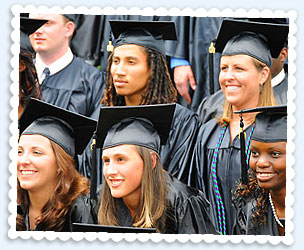Quick Facts
 Contributing to the Educational and Economic Welfare of South Carolina
Contributing to the Educational and Economic Welfare of South Carolina
Since 1826, the independent sector of postsecondary education has been a vital part of the cultural, educational, and economic development of South Carolina. The independent colleges and universities continue to provide rich, robust, and diverse higher educational opportunities that are an integral part of the development and maintenance of a balance educational system in the state. Consider the following facts:
- SCICU’s member colleges and universities educate and inspire more than 36,000 undergraduate and graduate students throughout South Carolina.
- While enrolling approximately 15% of all undergraduates in the state, SCICU’s 21 member colleges and universities award nearly 24% of the state’s bachelor degrees.
- Our colleges and universities have an average Student-to-Faculty Ratio of 14-to-1.
- Our independent institutions are diverse and have served the state’s minority communities for many generations. Nealy half – 47% – of our students identify as minority and 28% identify as African American.
- Our total undergraduate enrollment is 59% female.
- For nearly two thirds (65%) of SCICU students, South Carolina is their home.
- More than 95% of the students attending SCICU member schools receive financial assistance.
- SCICU institutions invest strongly in the success of their students. At $321.8 million, institutional scholarships and grants account for more than half (51.5%) of the financial aid package provided for undergraduates.
- Two-fifths (40%) of SCICU undergraduate students benefit from the S.C. Tuition Grants Program.
- Pell Grants are part of the financial aid package for 41% of SCICU undergraduates.
- South Carolina’s independent colleges and universities employ more than 8,500 faculty and staff. Collectively they are economic engines and cultural centers adding more than $933 million annually to the state’s economy.
Source: SCICU Statistical Abstract, 2022
